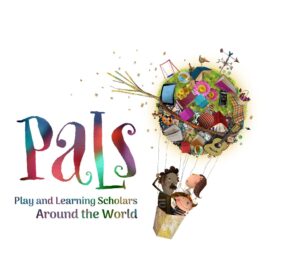By Dr Sarah Jane Mukherjee (The Open University) and Dr Lucía Bugallo (CONICET-Universidad del Comahue, Argentina)
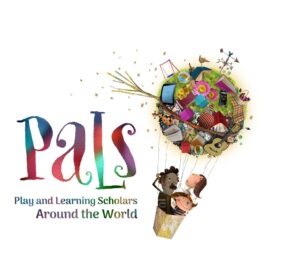
Research into how children conceive of significant aspects of their lives offers insights into their understanding of the world and importantly the way in which childhoods are experienced. It has implications for design of pedagogy and how pedagogies are able to engage and expand those experiences.
Research by the Play and Learning Scholars (PALS) aims to understand how young children of 5 and 7 years old conceive of play and its relation to learning in five sites across different countries (Argentina, Denmark, Hong Kong, the UK and US). Understanding young children’s conceptions of their worlds is a challenge: How can we capture the process of constructing and communicating a worldview? What are the ways in which children best express themselves? What kind of tasks can we offer to maintain engagement? What cultural considerations should be made? Sensitive to the aims of the research and our young participants, a playful engagement was developed for the study and employed across the five different sites. This blog outlines the features of the engagement highlighting the decisions made that were intended to offer a social and enjoyable encounter in which the children could be deeply involved and in which they would feel comfortable to think and express themselves.
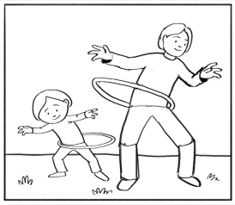
Card design: Building on previous work by members of the project team, we developed a card sorting activity as the foundation of the first part of the participant engagement. We designed a set of 36 cards with line drawings depicting children (alone and with peers) and adults engaged in different activities, some of which were ‘playful’, such as swinging or hula hooping, and some ‘everyday’ activities such as laying the table or tying shoelaces. The team members all agreed the activities represented to ensure that they would be familiar for the children in the different cultural contexts.
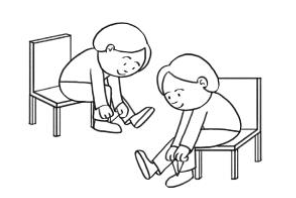
Card sorting activity: In the engagement itself we started by explaining to the children that we, as adults, needed their expert help to understand how they think about play, and each child was invited to spread the cards out on a table. Then, the child was asked to sort cards that they thought represented play and not play and separately learning and not learning. Placing the cards in two separate baskets each time, the child sorted the cards four times. The children delighted in this activity, sometimes selecting cards in silence and sometimes articulating their thoughts about the activity depicted on the card and their decision, sometimes changing their minds. After the first sort, excited utterances such as ‘I know what to do’ showed that the children were actively involved in the task, and the familiarity of the task seems to increase their enjoyment of the activity.
Card selecting activity and an invitation to reflect on play: Having enjoyed the card sorting activity, the children were relaxed and engaged, and this was a perfect moment to pose some guided questions. This part of the engagement aimed to probe for details around affective and social factors that may have influenced their choices of activities that were play/ not-play and learning/ not-learning. To do this, the child was invited again to spread out the cards and select the one they thought was most representative taking play, not-play, learning and not-learning in turn. For each we asked the child to justify their selection with an open question and prompts to encourage her/ him to explain the reasons for their choices. Some children offered quite detailed explanations, such as this five-year-old girl from Argentina:
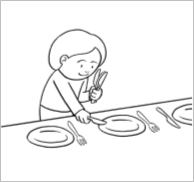
‘Because I love playing with play dough, I want to learn to make the dough, and I love playing with dough at kindergarten. I always play and I have some to make gnocchi, to make a sausage and then cut the gnocchi. Then we make a ball, I press it like this and I put little olives and make a pizza to give to the teacher’.
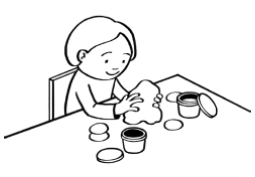
The children reflected on their own and other’ preferences and experiences, like this seven-year-old boy from the UK: ‘Because you can dress-up anything in your imagination and you can pretend you are a monster or a bear or a superhero, and it makes me feel really happy, really, and sets my imagination free’.
Teaching a puppet: Then the fun really started. A complete shift in the engagement surprised the children as they were invited to play teacher. The researcher told the child that they had a friend they’d like them to meet – the puppets Zim and Rikko. As the puppet came from a planet on which they didn’t play/learn, the children were asked to ‘teach’ Zim to play and Rikko to learn. Some children offered instructions of a game, like this 5-year-old from Denmark: ‘Soap bubbles: You just have to blow with force but you have to do it slowly with force’. Some children focused on the attitudes that best favour playing or learning, like this 5-year old boy from US: ‘If you wanna play you have to be nice’, or focused on the affective state that emerges during play: ‘Playing will make you laugh. If you laugh, then it shows that you are happy. When you are happy, you will know that you are playing’ (7-year-old girl, Hong Kong). A 7-year-old from the UK explained to Zim what is play through these words: ‘Playing is where you have to be with somebody else and it’s like a board game or something, or cards, and you can take turns on doing it, and you can get frustrated sometimes, maybe, when people take you over’.
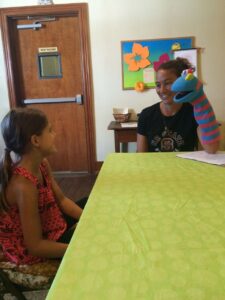
This playful engagement offered the children a way of expressing their own voices allowing them to reflect on their ideas of play and its relation to learning and in so doing, the research team were rewarded with a rich data set.

Sarah Jane Mukherjee and Lucía Bugallo
This project was funded by the LEGO Foundation.
PALS Project Team members [in alphabetical order of RA]: Lucía Bugallo & Nora Scheuer (IPEHCS-CONICET-Universidad del Comahue), Doris Cheng (Tung Wah College), Sarah Jane Mukherjee & Teresa Cremin (The Open University), Jill Popp (The LEGO Foundation), Marcia Preston & Roberta Golinkoff (University of Delaware).
